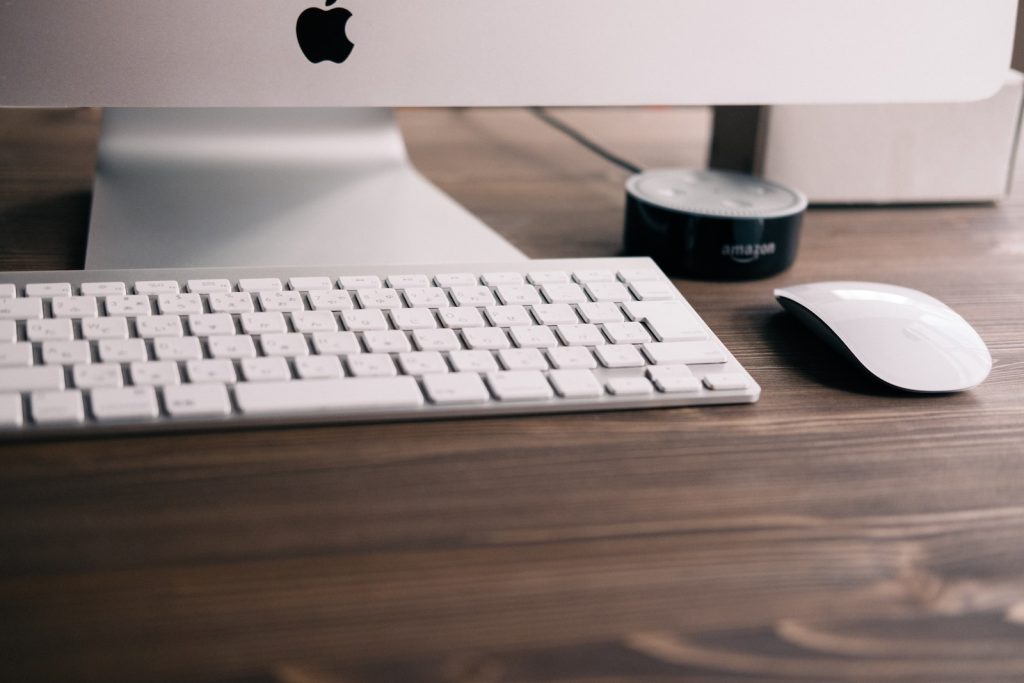Imagine the feeling of a gentle ocean breeze brushing against your fingertips, or the sensation of piano keys under your hands as you compose a symphony. Now, envision that same tactile experience as you type an email or craft a document. This isn’t a scene from a futuristic novel; it’s the reality brought to us by haptic keyboard innovations.
Haptic technology, the science of applying touch (tactile) sensation and control to interaction with computer applications, has taken a leap forward into our everyday typing tools. The traditional clunky keys and monotonous typing are being replaced with dynamic feedback that promises to revolutionize the way we interact with our machines.

Tactile Typing Experience Redefined
The Haptic Feedback Mechanism
The core of haptic keyboard innovations lies in the haptic feedback mechanism. Each key press on a haptic keyboard provides physical feedback, akin to the vibrations you feel when tapping your smartphone screen, but more refined. These subtle vibrations can mimic anything from the clickiness of a mechanical keyboard to the soft landing of a rubber dome switch, all while being adjustable to suit your typing preference.
Ergonomics and the Sensory Impact
Haptic keyboards are not just about the feel; they’re also pioneering ergonomic benefits. They reduce the strain on your fingers by providing feedback before a key is fully pressed, signaling your brain to move to the next key sooner. This can significantly reduce the risk of repetitive strain injuries, making haptic keyboards a smart choice for both health and productivity.
Innovations in Haptic Touch Keyboards
Personalized Typing Dynamics
The most exciting haptic keyboard innovations are the personalized typing dynamics. Imagine a keyboard that learns from your typing habits and adjusts the haptic feedback accordingly, providing a softer response for light typists or a stronger sensation for those who type with more force. This personalization goes beyond comfort; it enhances typing speed and accuracy.
Gaming and Creative Workspaces
Haptic keyboard innovations are not confined to office work. In gaming, they provide real-time feedback that can mimic in-game actions, adding an immersive layer to the gaming experience. For creative professionals, haptic feedback can be programmed to offer different sensations for different actions, like a unique vibration for saving a file or a gentle thud when a design element snaps into place.
The Future Is Now: Next-Gen Computer Keyboards
Smart Material Integration
The integration of smart materials into haptic keyboards is a game-changer. Materials that change their properties in response to electrical signals can create a range of textures on a keyboard. This means you could feel the difference between typing on glass, wood, or velvet, all from the same device.
AI and Haptic Keyboard Evolution
Artificial Intelligence (AI) plays a pivotal role in the evolution of haptic keyboards. AI algorithms can analyze your typing patterns and automatically adjust the haptic feedback to prevent fatigue, or even predict the keys you’re about to press, readying them to respond more quickly to your touch.
Haptic Keyboard Benefits Beyond the Feel
Speed, Accuracy, and Learning
Haptic feedback isn’t just pleasant; it can significantly impact typing speed and accuracy. The tactile cues help with muscle memory, leading to faster learning for new typists and aiding experienced typists to reduce errors. It’s not just about efficiency; it’s about writing with a flow that feels natural and effortless.
Haptic Sensation for Enhanced Security
Security is a facet where haptic keyboards are carving a niche. The ability to create distinct vibrations for different actions can also serve as an additional layer of security. For instance, a specific pattern could signal a secure login, whereas a different pattern might indicate a potential threat or a non-secure input.
The Silent Office Revolution
In a bustling office environment, the clatter of keyboards can be a significant distraction. Haptic keyboards offer a silent typing solution, with the option to turn off auditory feedback and rely solely on tactile cues. This can create a quieter, more focused office atmosphere, which is beneficial for concentration and productivity.

Haptic Response Keyboards: A Sensory Journey
The Role of Feedback Intensity
The intensity of feedback is a critical aspect of haptic keyboards. Innovators are experimenting with keyboards that provide varying levels of intensity for different tasks — gentle for typing and firmer for more command-heavy tasks like gaming. This dynamic response can also be programmed to alert users of urgent notifications or errors, integrating seamlessly into workflow management.
The Therapeutic Angle
There’s a therapeutic angle to haptic feedback that’s being explored. The sensation of touch has been known to have calming effects, and haptic keyboards can be designed to provide a stress-relieving experience. Gentle vibrations could potentially reduce anxiety and offer a moment of relaxation during intense work sessions.
Innovative Keyboard Designs: Aesthetics Meets Function
Customizable Aesthetics
The future of haptic keyboards isn’t just about how they feel but also how they look. Innovations include customizable backlighting and keys that can display different colors and patterns. This visual feedback can work in tandem with haptic feedback to provide a multi-sensory typing experience that is as aesthetically pleasing as it is functional.
Modular and Sustainable Designs
Sustainability is becoming increasingly important, and haptic keyboard innovations reflect this shift. Modular designs allow users to replace individual keys instead of the entire keyboard, reducing electronic waste. The materials used are also evolving, with a focus on durability and eco-friendliness, ensuring that these devices are built to last and kind to the planet.
The Haptic Keyboard Market: Trends and Potential
Consumer Demand and Market Growth
As consumer awareness grows, the demand for haptic keyboards is set to increase. The market is already witnessing a surge in interest from both individual consumers and large-scale enterprises. The potential for growth in this sector is vast, with haptic technology being one of the driving forces behind the future of human-computer interaction.
Educational and Professional Training Tools
Haptic keyboards are breaking ground as educational tools. They can simulate different typing experiences, making them ideal for typing courses and professional training. The ability to adjust the haptic feedback allows for a customized learning environment that can cater to the needs of various learning styles and abilities.
Haptic Keyboard Innovations: The Journey Ahead
Overcoming Challenges
Despite the promise, haptic keyboard innovations face challenges. The cost of advanced technology can be a barrier to widespread adoption. Moreover, there’s a learning curve associated with adopting new typing technologies. Manufacturers and developers are working on making these keyboards more affordable and user-friendly, ensuring they’re accessible to a broader audience.
Research and Development: The Path Forward
Ongoing research and development are crucial for the evolution of haptic keyboards. As more resources are invested in understanding how we interact with our devices, the possibilities for innovation in this space grow. From new haptic patterns to AI integration, the path forward is rich with potential.
A Call to Developers and Designers
The call to action for developers and designers is clear: there’s a world of opportunity in haptic keyboard technology. Collaboration across industries can lead to breakthroughs in design, functionality, and user experience. By focusing on user-centric design and innovative applications, the future of haptic keyboards is not only bright but also within our grasp.
Conclusion:
In conclusion, haptic keyboard innovations mark a significant leap in human-computer interaction. By offering personalized tactile feedback, enhanced ergonomics, and silent operation, they redefine our typing experience. These keyboards promise benefits ranging from increased typing efficiency and security to potential therapeutic effects. As the technology becomes more affordable and user-friendly, it is poised to revolutionize not only personal computing but also gaming, creative industries, and accessibility, signaling a future where the sense of touch becomes integral to our digital interactions.
Frequently Asked Questions
What is a haptic keyboard?
A haptic keyboard is a type of keyboard that provides physical feedback to the user through vibrations or motions, enhancing the tactile experience of typing.
How does haptic feedback improve typing?
Haptic feedback can improve typing by providing physical cues for keystrokes, which may increase speed, reduce errors, and enhance the overall typing experience.
Can haptic keyboards help with ergonomics?
Yes, haptic keyboards can reduce the strain on your fingers and wrists by signaling when to move to the next key, potentially lowering the risk of repetitive strain injuries.
Are haptic keyboards customizable?
Many haptic keyboards offer customizable feedback settings, allowing users to adjust the intensity and type of tactile response to suit their preferences.
Do haptic keyboards only benefit gamers?
While gamers can benefit from the immersive experience haptic keyboards provide, these innovations also offer advantages for typists, professionals, and individuals with accessibility needs.

Experience is what matters at the end!!
Hi! This is Jacob Jay – founder of Keyboardgear.com! From childhood to adulthood, I’ve always remained passionate about IT, and the revolution in this industry, especially gaming on the PC can’t go out of my way. Since I’m an enthusiastic gamer, and I love to experience various gaming accessories, particularly mechanical keyboards, that really boost my gaming adventure manifolds. So, my nerve cells hit me to transfer my experiences into word form and share with others to identify the ideal keyboards perfectly fit for their gaming modes.
I know very well how hard it is to find the high-quality items available on the internet that ought to be exactly the same as seen as on the screen. But the counterfeiters have ruined the user’s trust. As I have passed all such situations, I’m obliged to deliver the genuinity and express the same as what I am saying.
So, now, I’m working on the mission to provide very helpful and frankly but trustworthy reviews and guides about various mechanical keyboards, mouses, and other gaming accessories as per my personal experiences and sound knowledge.
